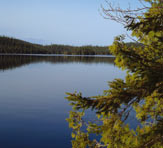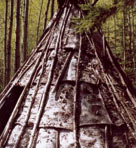Mendis (2004) developed the following conceptual model of community capacity based on a literature review, grounded field work, and analysis of field data and other available data. The study looked closely at the status and needs for capacity in two Canadian Biosphere Reserves: the Clayoquot Sound and Redberry Lake Biosphere Reserves. Mendis's model is particularly interesting in the context of Aboriginal forestry, because it attempts to integrate key principles of the Nuu-chah-nulth Peoples' relationship to the land and to each other.
|


